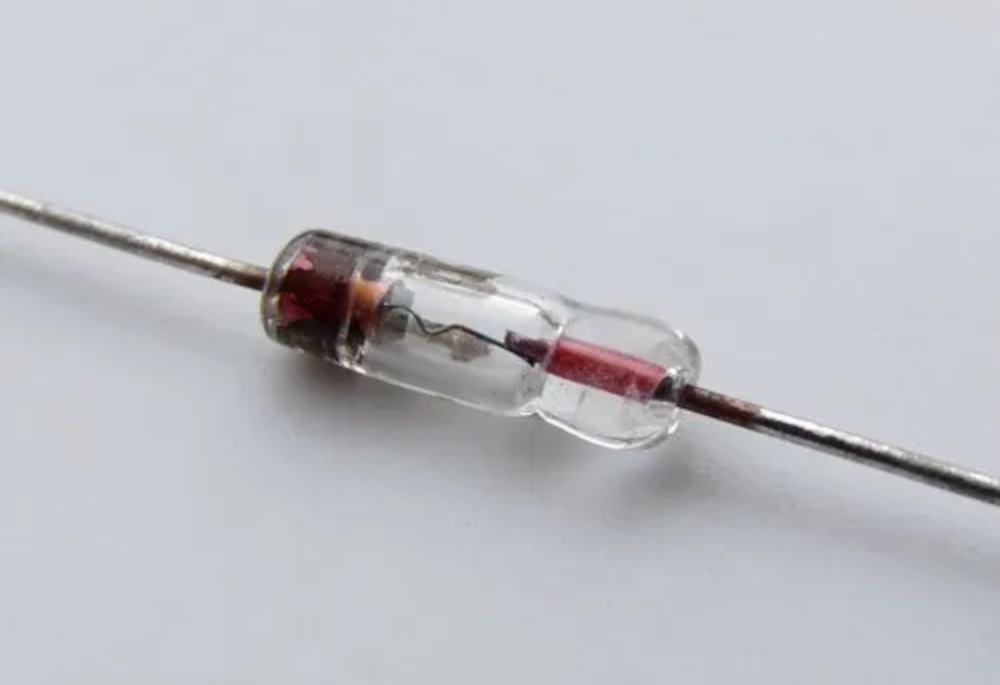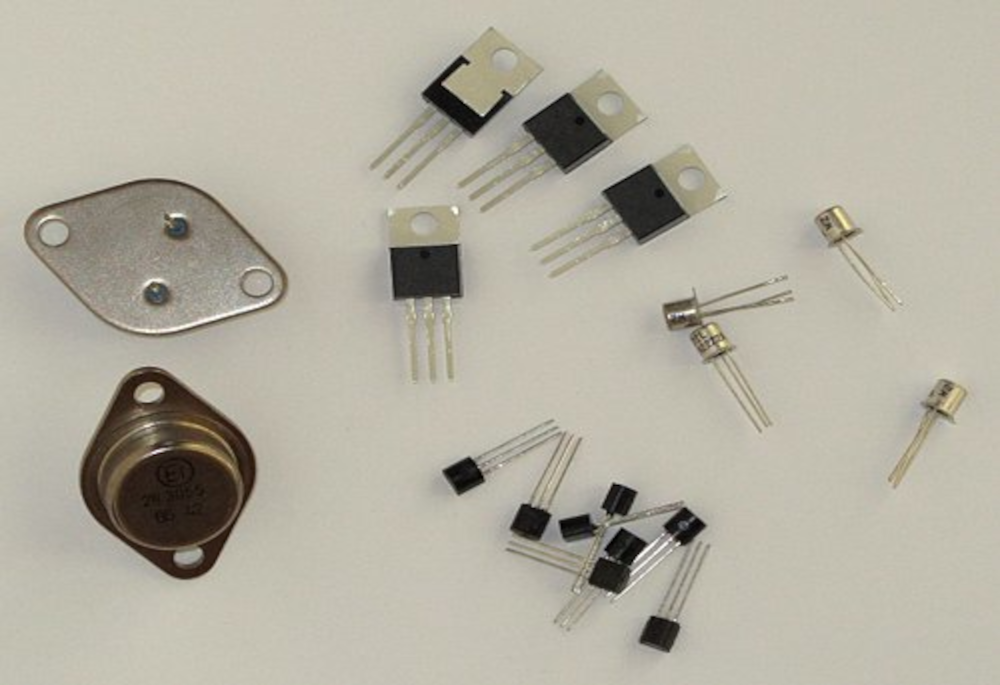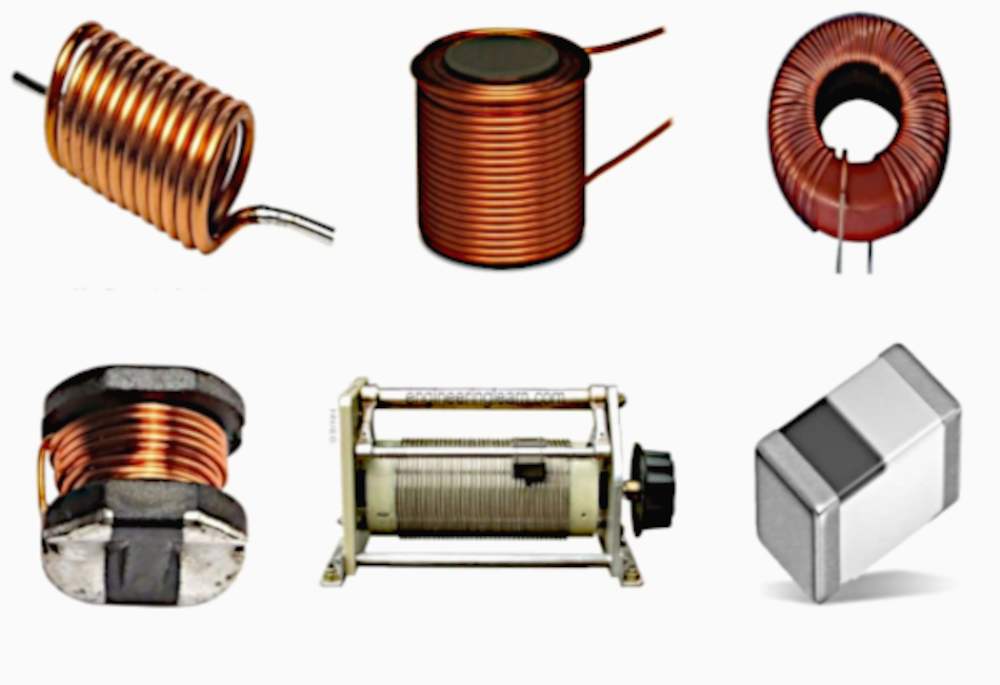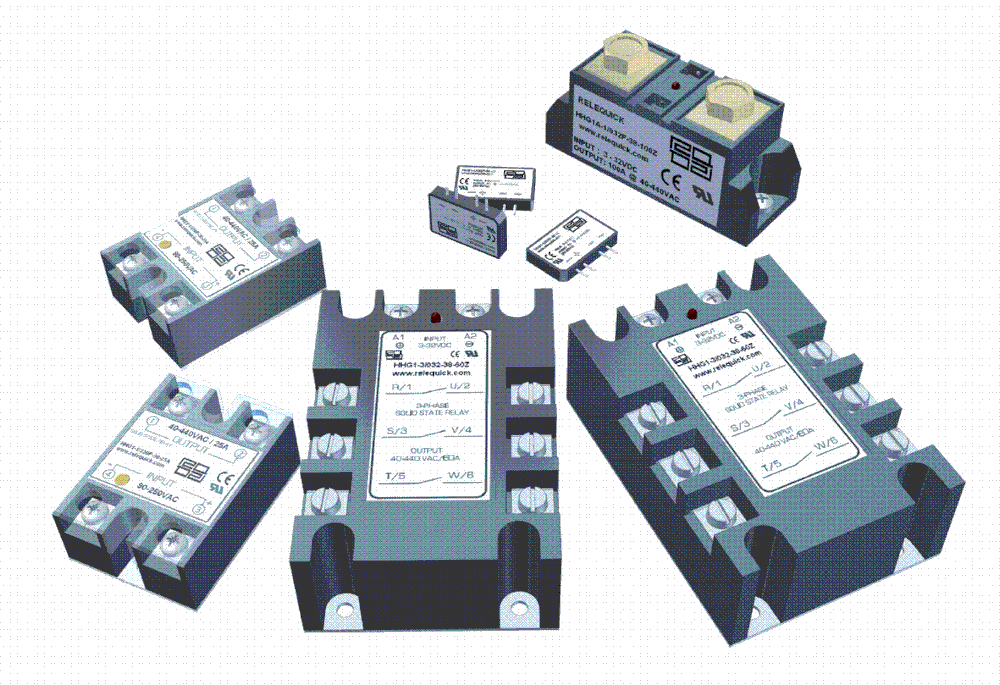Diode
A diode is a two-terminal device that allows electric current to flow in only one direction. Thus, it is the electronic equivalent of a check valve or a one-way street. It is commonly used to convert an AC into a DC. It is made either of a semiconductor material (semiconductor diode) or vacuum tube (vacuum tube diode). Today, however, most diodes are made from semiconductor material, particularly silicon.
A vacuum diode consists of two electrodes (cathode and anode) placed inside a sealed vacuum glass tube. A semiconductor diode comprises p-type and n-type semiconductors. It is, therefore, known as a p-n junction diode. It is usually made of silicon, but we can also use germanium or selenium.
The most common and important application of a diode is the rectification of AC power to DC power. Usually, a half-wave (single diode) or a full-wave (four diodes) rectifier is used to convert AC power into DC power, particularly in household power supply. Bypass diodes are often used to protect solar panels. When the current from the rest of the cells passes through a damaged or dusty solar cell, it causes overheating. As a result, the overall output power decreases, creating hot spots. The diodes are connected parallel to the solar cells to protect them against this overheating problem. This simple arrangement limits the voltage across the bad solar cell while allowing the current to pass through undamaged cells to the external circuit. When the power supply is suddenly interrupted, it produces a high voltage in most inductive loads. This unexpected voltage spike can damage the loads. However, we can protect expensive equipment by connecting a diode across the inductive loads. They are also used in the process of signal modulation because diodes can remove the negative element of an AC signal efficiently. The diode rectifies the carrier wave, turning it into DC. The audio signal is retrieved from the carrier wave, a process called audio-frequency modulation. Hence, diodes are commonly found in radios to extract the signal from the carrier wave. Reversing polarities of a DC supply or incorrectly connecting the battery can cause a substantial current to flow through a circuit. Such a reverse connection can damage the connected load. That’s why a protective diode is connected in series with the positive side of the battery terminal. The diode becomes forward-biased in the case of correct polarity and the current flows through the circuit. However, in the event of a wrong connection, it becomes reverse-biased, blocking the current.


Transistor
One of the most crucial components of an electronic circuit, transistors have revolutionized the field of electronics. They are often used as amplifiers and switching devices. We can think of them as relays without any moving parts because they can turn something ‘on’ or ‘off’ without any movement. There are two different types of Bipolar Junction Transistors (BJT) - NPN and PNP. Each transistor has three pins called base (b), collector (c), and emitter (e). An NPN transistor requires a positive voltage to the base, while a PNP requires a negative voltage.
Transistors function as both switches and amplifiers in most electronic circuits. Designers often use a transistor as a switch because unlike a simple switch, it can turn a small current into a much larger one. One of the most well-known applications of transistors is the hearing aid. Usually, a small microphone in the hearing aid picks up the sound waves, converting them into fluctuating electrical pulses or currents. When these currents pass through a transistor, they are amplified. The amplified pulses then pass through a speaker, converting them into sound waves once again. Transistors play a critical role in making logic gates, which are the backbones of computer programs. Transistors are often hooked up with logic gates to build a unique piece of an arrangement called a flip-flop. In this system, the transistor remains ‘on’ even if we remove the base current. It now flips on or off whenever new current passes through it. Thus, a transistor can store a zero when it’s off or a one when it’s on, which is the working principle of computers. Darlington transistors are found in instruments that require a high current gain at a low frequency such as power regulators, display drivers, motor controllers, light and touch sensors, alarm systems, and audio amplifiers. The Insulated-Gate Bipolar Transistor (IGBT) transistors are often used as amplifiers and switches in various instruments including electric cars, trains, refrigerators, air-conditioners, and even stereo systems. On the other hand, Metal-Oxide-Semiconductor Field-Effect Transistors (MOSFET) are commonly used in integrated circuits to control a device’s power levels or for storing data.


Inductor
An inductor stores energy in its magnetic field, returning it to the circuit whenever required. It was discovered that when two inductors are placed side by side without touching, the magnetic field created by the first inductor affects the second inductor. It was a crucial breakthrough that led to the invention of the first transformers. The inductance is directly proportional to the number of turns in the coil. Sometimes, the coil is wound around a ferromagnetic material such as iron, laminated iron, and powdered iron to increase the inductance. The shape of this core can also increase the inductance. Toroidal (donut-shaped) cores provide better inductance compared to solenoidal (rod-shaped) cores for the same number of turns. However, because it is difficult to join inductors in an integrated circuit, they are usually replaced by resistors.
Whenever the current passes through a wire, it creates a magnetic field. However, the unique shape of the inductor leads to the creation of a much stronger magnetic field. This powerful magnetic field, in turn, resists alternating current, but it lets direct current flow through it. This magnetic field also stores energy. In a simple circuit comprising a battery, a switch, and a bulb; the bulb will glow brightly the moment we turn the switch on. But adding an inductor to this circuit, as soon as we turn the switch on, the bulb changes from bright to dim. On the other hand, when the switch is turned off, it becomes very bright, just for a fraction of a second before turning off completely. As we turn the switch on, the inductor starts using the electricity to create a magnetic field, temporarily blocking the current flow. But, only DC current passes through the inductor as soon as the magnetic field is complete. That’s why the bulb changes from bright to dim. All this time, the inductor stores some electrical energy in the form of magnetic field. So, when we turn the switch off, the magnetic field keeps the current in the coil steady. Thus, the bulb burns brightly for a while before turning off.
One of the most common applications of inductors is to select the desired frequency in tuned circuits. They are used extensively with capacitors and resistors, either in parallel or series, to create filters. The impedance of an inductor increases as the frequency of signal increases. Thus, a stand-alone inductor can only act as a low-pass filter. However, when we combine it with a capacitor, we can create a notched filter. They are found in most electronics including televisions, desktop computers, and radios. Most proximity sensors work on the principle of inductance. An induction motor is probably the most common example of the application of inductors. The discovery of inductors led to the invention of transformers, one of the fundamental components of power transmission systems. We can create a transformer by combining the inductors of a shared magnetic field. They are usually used to increase or decrease voltages of the power lines to the desired level. Just like a capacitor, an inductor can also store energy. However, unlike a capacitor, it can store energy for a limited time. As the energy is stored in a magnetic field, it collapses as soon as the power supply is removed.


Relay
A relay is an electromagnetic switch that can open and close circuits electromechanically or electronically. We need a relatively small current to operate a relay. We can switch it on with a small current to turn on another circuit using large current. Relays are either electromechanical relays or solid-state relays.
An Electromechanical Relay (EMR) comprises a frame, coil, armature, spring, and contacts. The frame supports various parts of the relay. The armature is the moving part of a relay switch. A coil (mostly copper wire), wound around a metal rod generates a magnetic field that moves the armature. Contacts are the conducting parts that open and close the circuit.
A Solid-State Relay (SSR) consists of an input circuit, a control circuit, and an output circuit. The input circuit is the equivalent of a coil in an electromechanical relay. The control circuit acts as a coupling device between input and output circuits, while the output circuit performs the same function as the contacts in an EMR.
Whether we are using an electromechanical relay or a solid-state relay, it is either a Normally Closed (NC) or a Normally Opened (NO) relay.
As they can control a high current circuit by a low current signal, most control processes use relays as the primary protection and switching devices. They can also detect fault and irregularities occurring in the power distribution systems. Typical applications include telecommunication, automobiles, traffic control systems, home appliances, and computers among others.


Quartz Crystal
Quartz crystals have several applications in the electronics industry. However, they are mostly used as resonators in electronic circuits. Quartz is a naturally occurring form of silicon. It is now produced synthetically to meet the growing demand. It exhibits the piezoelectric effect. If we apply physical pressure on one side, the resulting vibrations generate an AC voltage across the crystal. They are often used to make crystal oscillators to create an electrical signal with a precise frequency.
If we apply an alternating voltage to a crystal, it causes mechanical vibrations. The cut and the size of the quartz crystal determine the resonant frequency of these vibrations or oscillations. Thus, it generates a constant signal.
We can find this highly reliable component in radio frequency applications, as oscillator clock circuits in microprocessor boards, and as a timing element in digital watches as well.
Quartz watches are battery-powered. Usually, a tiny crystal of quartz regulates the gears that control the second, the minute, and the hour hands. As quartz watches use very little energy, the battery can often last longer. The problem with traditional coil spring watches is that we have to keep winding the coil periodically. Pendulum watches, on the other hand, depend on the force of gravity. Thus, they tell time differently at different sea levels and altitudes due to changes in the gravitational force.
We can also use quartz crystals in an electronic circuit as filters. They are often used to filter out unwanted signals in radios and microcontrollers.









